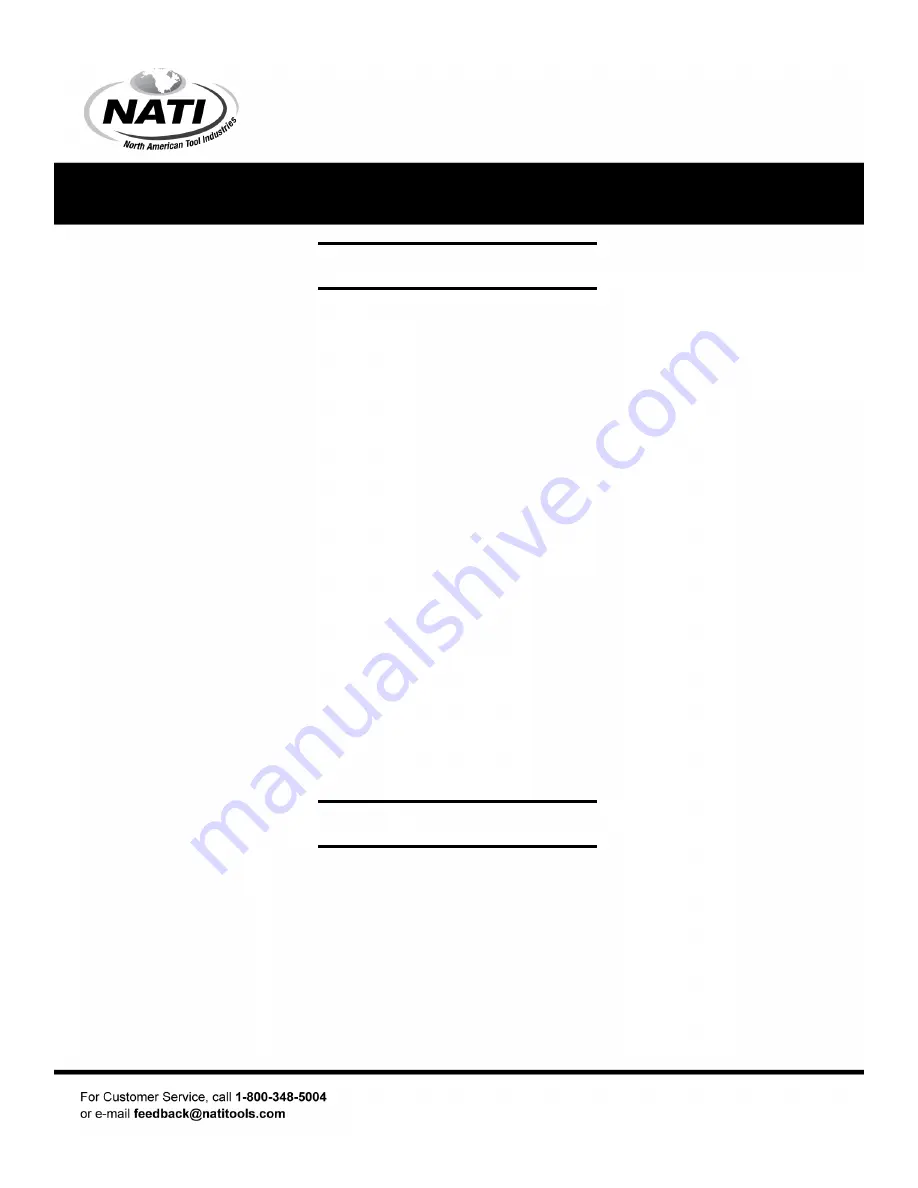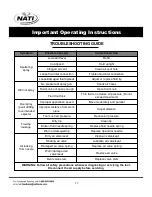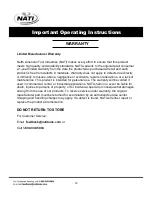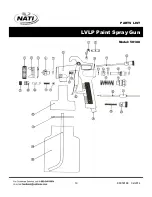
6
This tool vibrates during use. Repeated or long-term exposure to vibration may cause
temporary or permanent physical injury, particularly to the hands, arms, and shoulders. To
reduce the risk of vibration-related injury:
1.
Anyone using vibrating tools regularly or for an extended period of time should first be
examined by a doctor and then have regular medical check-ups to ensure medical
problems are not being caused or worsened from use. Pregnant women or people who
have impaired blood circulation to the hand, past hand injuries, nervous system disorders,
diabetes, or Raynaud’s Disease should not use this tool. If you feel any symptoms related
to vibration (such as tingling, numbness, and white or blue fingers), seek medical advice
as soon as possible.
2.
Do not smoke during use. Nicotine reduces the blood supply to the hands and fingers,
increasing the risk of vibration-related injury.
3.
Wear suitable gloves to reduce the vibration effects on the user.
4.
Use tools with lower vibration when there is a choice.
5.
Include vibration-free periods each day of work.
6.
Grip the tool as lightly as possible (while still maintaining a secure hold). Let the tool do
the work.
7.
To reduce vibration, maintain tool as explained in this manual. If abnormal vibration
occurs, stop immediately.
Important Operating Instructions
VIBRATION PRECAUTIONS
INITIAL SETUP & ASSEMBLY
Air Supply
WARNING:
To prevent serious injury from explosion, use only clean, dry, regulated,
compressed air to power this tool. Do not use oxygen, carbon dioxide, combustible gases,
or any other bottled gas as a power source for this tool.
1.
Incorporate a filter, regulator with pressure gauge, oiler, in-line shutoff valve, and quick
coupler for best service. Refer to the diagram at the end of this manual for more
information.
An in-line shut-off ball valve is an important safety device because it






































